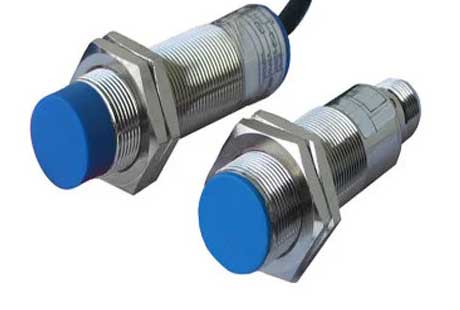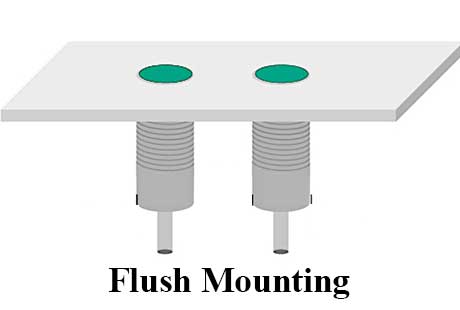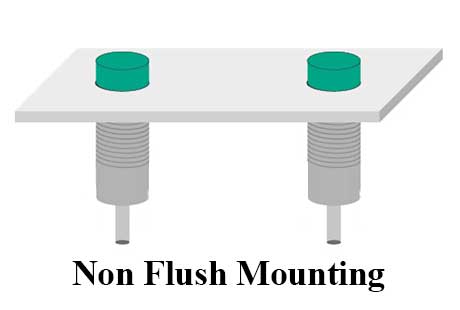What is Flush and Non-Flush in Proximity Sensors?
Let’s talk about proximity sensors, specifically the flush and non-flush types. If you’re in the industrial engineering field, understanding these sensors is key. So, let’s break it down in a straightforward, easy-to-understand way.
What is a Proximity Sensor?
A proximity sensor is an electronic device engineered to detect the presence or absence of objects without any physical contact. Utilized extensively in industrial automation, these sensors provide critical data for the monitoring and control of machinery, ensuring operational accuracy and safety.
Table of Contents:
Flush (Shielded) Proximity Sensors:
What Are They?
Flush Proximity sensors, also known as shielded Proximity sensors, are designed to be mounted so that their sensing face is flush with the surface.
Think of them as being level with the surface they’re mounted on.
Key Features:
Flush Type Proximity sensors are surrounded by a metal shield. This means they can be embedded in metal without interference.
Applications:
Shielded Proximity Sensors or Flush Proximity sensors are ideal for tight spaces where you can’t have anything sticking out. They’re commonly used in integrated systems where space is a premium.
- Perfect for Tight Spaces: Flush sensors fit seamlessly into small areas, avoiding any protrusion.
- Level with the Surface: They are mounted flush, aligning perfectly with the mounting surface.
- Ideal for Compact Systems: Great for use in intricate machinery or densely packed circuit boards.
- Space-Saving Design: Their flush mounting means they don’t occupy extra space, crucial in tight setups.
- Common in High-Tech Equipment: Often found in advanced manufacturing machines and compact electronic devices.
Sensing Range:
The downside? Flush-type Proximity sensors have a shorter sensing range. Example M8 Dia: 1 to 1.5mm, M12 Dia:2 to 4mm, M18 Dia:5 to 8mm, M30: 10 to 15mm. But in many cases, especially where precision is more important than distance, they’re perfect.
Non-Flush (Non-Shielded) Proximity Sensors:
What Are They?
Non-flush Proximity sensors, or non-shielded or Un-shielded Proximity sensors, protrude a bit from the surface they’re mounted on.
They don’t have a metal shield around the sensing face.
Key Features:
The lack of a shield means these sensors can’t be embedded in metal like flush sensors. But they make up for it with a longer sensing range.
Applications:
Choose non-flush sensors when you need that extra sensing distance. They’re great for situations where the sensor can’t be too close to the object.
- Long-Distance Sensing: Non-flush sensors are your go-to when you need to detect objects from a distance. They have a longer reach, making them perfect for spacious setups.
- Flexibility in Placement: Since they protrude, you can place them further away from the target object. This is handy in areas where close proximity might be an issue.
- Versatile Use: Great for a variety of applications, especially where the sensor needs to ‘see’ over obstacles or in open spaces.
- Industrial Settings: Often used in manufacturing and automation, where machines and parts move around a lot and you need that extra sensing range.
- Safety and Monitoring: Ideal for safety systems or monitoring equipment that require a broader field of detection without physical contact.
Sensing Range:
Non-flush proximity sensors have a longer sensing range compared to Flush Type Sensor. Example M8 Dia: 1.5 to 3mm, M12 Dia:3 to 8mm, M18 Dia:5 to 12mm, M30: 15 to 20mm. This makes them versatile for a variety of applications where distance sensing is key.
Comparing Flush and Non-Flush Sensors:
When choosing between flush and non-flush proximity sensors, it’s like picking the right tool for a specific job. Each type has its own strengths and quirks. Let’s dive into the details and see how they stack up against each other.
Mounting:
- Flush Sensor: Flush with the surface, creating a seamless and level appearance.
- Non-Flush Sensor: Protrude from the surface they are mounted on, with noticeable protrusion.
Design:
- Flush Sensor: Encased in a metal shield, allowing integration into metallic environments without interference.
- Non-Flush Sensor: Lacks a metal shield, making it unsuitable for embedding in metal but allows for a greater sensing range.
Sensing Range:
- Flush Sensor: Offers a shorter sensing range due to the shielding.
- Non-Flush Sensor: Provides a longer sensing range, beneficial for applications requiring distance detection.
Space Requirement:
- Flush Sensor: Ideal for compact spaces where protrusion is not desirable.
- Non-Flush Sensor: Requires more space due to its protruding design.
Interference Resistance:
- Flush Sensor: Better equipped to handle electromagnetic interference thanks to its metal shield.
- Non-Flush Sensor: More prone to interference, lacking the protective shielding.
Choosing the Right Sensor: Flush vs Non-Flush:
- Space Constraints: If you’re tight on space, flush sensors are ideal. They fit snugly into surfaces, making them perfect for compact designs.
- Metal Environments: Flush sensors can be embedded in metal without interference, a big plus for metal-heavy setups.
- Sensing Distance: Need to detect objects from afar? Non-flush sensors have a longer range, giving you more flexibility.
- Installation Flexibility: Non-flush sensors are easier to install in varied environments since they don’t require a flush mount.
- Application Specific: Consider what you’re monitoring. For precise, close-up work, flush sensors are great. For broader monitoring or safety applications, non-flush sensors offer the necessary range.
Conclusion:
Understanding the difference between flush and non-flush proximity sensors is crucial in industrial engineering. Each type has its advantages, and the right choice depends on your application’s specific requirements.
Remember, it’s all about using the right sensor for the right job. Keep exploring and stay innovative!



